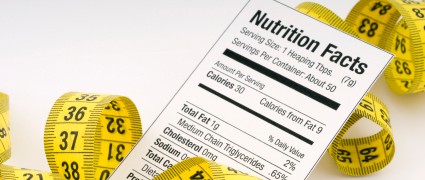Phys-Ed joins with the Academy of Nutrition and Dietetics during National Nutrition Month® Encouraging everyone to ‘Get your Plate in Shape’
This Month-long campaign highlights the importance of making informed food choices and developing sound eating and physical activity habits
Phys-Ed is proud to join the Academy of Nutrition and Dietetics (formerly the American Dietetic Association) during March in celebrating National Nutrition Month®. This year’s National Nutrition Month theme is “Get Your Plate in Shape” and encourages consumers to remember to include a variety of fruits, vegetables, whole grains, lean proteins and dairy on their plates every day.
In addition to our usual classes, personal training and fitness education programs, this month we will begin a new program “FIT” Feel incredible today that will help members to learn more about nourishing and working their bodies to achieve better health. It’s not all about the numbers on the scale, its about working our bodies to to achieve strength and stamina and fueling our bodies with healthy foods for better health and wellness.
Here are a few ways to “Get Your Plate in Shape” from the food and nutrition experts at the Academy of Nutrition and Dietetics:
- Make half of your plate fruits and vegetables: Eat a variety of vegetables, especially dark-green, red and orange varieties. Add fresh, dried, frozen or canned fruits to meals and snacks.
- Make at least half your grains whole: Choose 100 percent whole-grain breads, cereals, crackers, pasta and brown rice. Check the ingredients list on food packages to find whole-grain foods.
- Switch to fat-free or low-fat milk: Fat-free and low-fat milk have the same amount of calcium and other essential nutrients as whole milk, but less fat and calories. For those who are lactose intolerant, try lactose-free milk or a calcium-fortified soy beverage.
- Vary your protein choices: Eat a variety of foods from the protein food group each week, such as seafood, nuts and beans, as well as lean meat, poultry and eggs. Keep meat and poultry portions small and lean. And be sure to choose seafood as the protein at least twice a week.
- Cut back on sodium and empty calories from solid fats and added sugars: Compare sodium in foods and choose those with lower numbers, and season your foods with herbs and spices instead of salt. Switch from solid fats to healthy oils like olive and canola oil. Replace sugary drinks with water and choose fruit for dessert.
- Enjoy your foods but eat less: Avoid oversized portions. Use a smaller plate, bowl and glass. Cook more often at home where you are in control of what’s in your food. When eating out, choose lower calorie menu options.
Be physically active your way: Adults need at least 2 hours and 30 minutes of physical activity every week. Choose activities that you enjoy, and start by doing as much as you can.
Initiated in 1973 as a week-long event, “National Nutrition Week” became a month-long observance in 1980 in response to growing public interest in nutrition. Additionally, to commemorate the dedication of RDs as advocates for advancing the nutritional status of Americans and people around the world, the second Wednesday of March has been designated “Registered Dietitian Day.”
As part of this public education campaign, the Academy’s National Nutrition Month website includes a variety of helpful tips, fun games, promotional tools and nutrition education resources, all designed to spread the message of good nutrition around the “Get Your Plate in Shape” theme.
